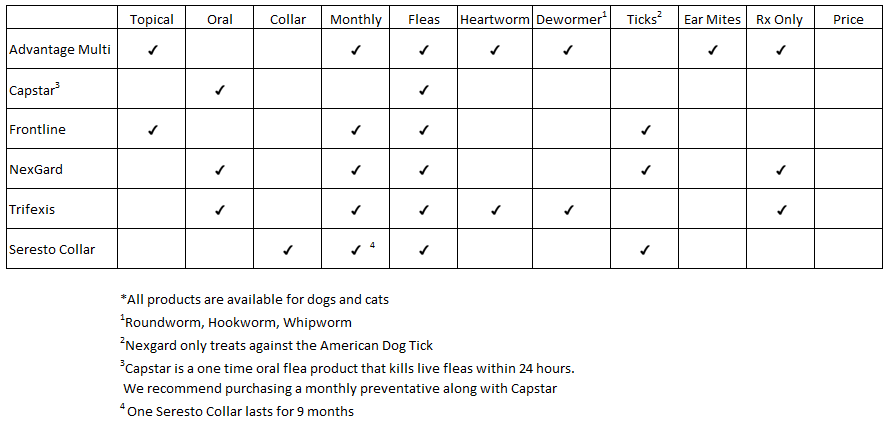1) Talk to your veterinarian
- Your veterinarian is your best source of information about flea prevention and control for your pet. Be sure to talk about how to protect your pet and your home from a flea infestation.
2) Treat all the pets in your home
- Don’t wait until you see a flea to treat your pet. You may not see a live flea on your pet unless there is a heavy infestation. This is because less than 5% of the flea population lives on your pet. The remainder of the fleas live in the environment.
- Rather than searching for live fleas, look for “flea dirt” (flea poop). Flea dirt looks like dark brown or black specks of dirt, usually found on the hind end of the pet near the tail. Use a flea comb near the base of the tail if you suspect your pet has fleas.
- If you see a flea, flea dirt, or suspect fleas on one of your pets, it is likely that the rest of your pets have fleas as well. This means all pets in your household must be treated with a safe, effective flea preventative. Fleas will continue to feed on those animals untreated, thereby creating a bigger colony inside (and outside) your home.
- Your best line of defense against a flea infestation is protecting your pets year round. It does not get cold enough in this region to kill fleas completely. Even if the adult fleas die in the winter, the pupa stage is still present inside and outside of your home, waiting to hatch when conditions become more ideal.
- If your pet has fleas, there is a possibility that it might have tapeworms as well. Tapeworms look like small grains of rice, and can develop from ingestion of fleas. If your pet is grooming itself and eats a flea, it may be at risk of developing tapeworms. Talk to your doctor about effective dewormers for pets.
3) Flea Life Cycle
- Adult: Adults lay 25-40 eggs per day on a pet
- Egg: Eggs fall off of the pet and hatch in the environment within 2-5 days
- Larva: Larva pupate in the environment within 7-14 days
- Pupa: Pupae hatch into adult fleas when exposed to enough heat and vibration. This usually happens within 1-2 weeks. Delayed emergence may take up to 4 months. This stage is resistant to all forms of pesticides.
4) Eliminate flea infestations in your home
- Steam clean (not shampoo) carpets and upholstery to kill pre-adult flea stages
- Vacuum frequently. Be sure to vacuum under all tables, beds, couches, etc. If these areas are left un-vacuumed, the eggs, larvae and pupae will end up in these areas and wait to hatch. When finished vacuuming, empty the bag/canister outside of your home and clean the filter each time.
- Launder bedding, blankets, pillows and throws
- Use premise sprays, foggers, bombs or aerosols. Be sure to keep pets away from all harmful chemicals during this process, as well as read and follow labeled directions. Repeat this step three weeks after the first round to kill those adults hatching from the resistant pupa stage.
- If the flea infestation is severe, consult with an exterminator
Flea Control Products

